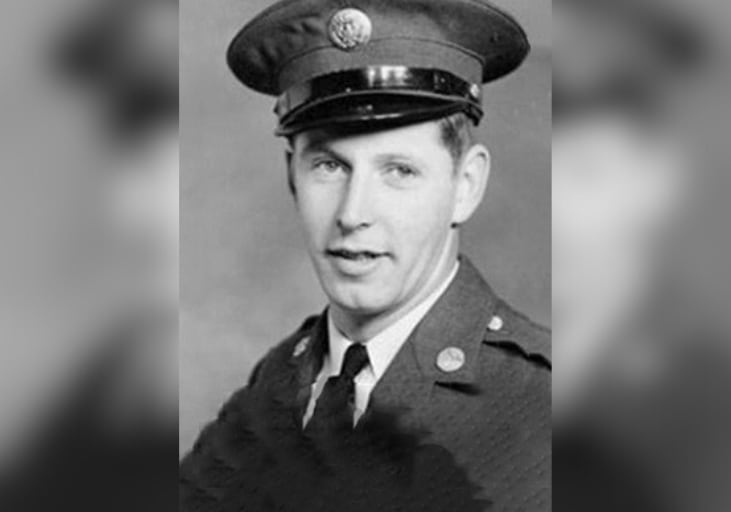The theme of the 2015 AUSA Annual Meeting & Exposition is "Win in a complex world." A fair share of that complexity is due to the ever-increasing cyber threat of cyber. Gary Martin, the chief of Program Executive Office Command Control Communications-Tactical (PEO C3T), fielded questions from the Show Daily staff on the topic of cyber, as well as improving network communications on the battlefield.
Interview excerpts:
Q. With cyber becoming an increasing threat, what have been PEO C3T's biggest contributions to addressing capabilities to date?
A. Immediate and on-going efforts include: Improving the speed and agility for applying software vulnerability patches to our tactical systems; increasing the rigor in malicious code detection, and enhancing our software assurance of commercial and government-developed software; working to incorporate tactical public key infrastructure to eliminate or reduce the reliance on passwords; and working with Army Research Lab's Survivability Assessment Directorate to test and assess cybersecurity implementation through the development and integration phases of the tactical network systems.
Q. How concerned should soldiers be regarding the security of the Army's network data, both in terms of battlefield tools and more standard computer networks?
A. The tactical network we are deploying today has a number of security features designed to enable defense against the cybersecurity threat. Our focus now is to minimize the burden to our soldiers and tactical units for maintaining information assurance vulnerability patches to these [tactical sytems]; developing new tools that improve our ability to know when someone has penetrated our networks and to limit the damage they can make when they do gain access; and to simplify/automate credentialing approaches to minimize reliance on manually entered passwords. Finally, we need to work closely with the strategic/enterprise network providers and maintainers to enhance the ability of the Cyber Protection Teams to provide support to the tactical network operators in order to reduce the burden of cyber defense in the tactical space.
Q. What changes should soldiers expect when it comes to tactical radio technology?
A. The primary changes in the tactical radio technologies is the move away from point-to-point or voice combat net radio solutions to networking technologies that allow the convergence of voice, data, and position location information on the same radio platforms. This principally changes the way dismounted solders receive and share information, particularly for mobile, on-the-move communications at the company and below. The NETT warrior program, for example, is enabled by the deployment of these new networking radio solutions.
We are currently testing and deploying a family of software-defined radios, which enable soldiers to stay connected using several software-based waveforms, which enable connectivity between soldier and platforms using the Rifleman Radio system carried by soldiers and vehicles equipped with manpack or mounted networking radios. From the soldier's perspective, the key feature provided by these new radios is the ability to simultaneously share voice, data and position location within dismounted formations and with the tactical network currently deployed across the Brigade.
Q. Regarding the Rifleman Radio and other enhancements to communications tools, there were some early kinks regarding reliability. Where do data-based radios stand in terms of reliability and range now?
A. When we initially developed the Rifleman Radio, we had integration challenges that needed to be addressed, specifically to get the Soldier Radio Waveform working reliably in the Rifleman Radio and the Manpack systems. Now, we have gone through a number of field exercises, tests, and deployments and integration with Nett Warrior where we have validated its ability to work within the broader network. We are currently testing production radios for two competing vendors, and so far the testing has been proceeding well with no issues/concerns on system reliability.
Q. What will company commanders be able to do with the WIN-T Increment 2 (which this summer proceeded to full-rate production) that they couldn't do with Increment 1?
A. WIN-T is the Army's network connectivity backbone providing expeditionary network capability during all operational phases. This year marked an important milestone for WIN-T, the Increment 2 on-the-move capability, as it was authorized for full-rate production. WIN-T Increment 2 provides company commanders and key battalion leaders access to high bandwidth satellite connectivity on the move. This allows them to manage their operations, exchange data and communicate very similar to the way they would in a static command post but while on the move in their vehicles. WIN-T connectivity brings a whole suite of services to the commander on the move enabling the commander to reach out and touch his subordinate commanders, to pass products to the staff and to have real-time communications with elements that he never would have had prior to this capability.
Feedback on the system capabilities has been positive, but soldiers and leaders who have used the system in combat and training exercises have asked for more simplistic user interfaces, lighter weight solutions and the ability for rapid reconfiguration of the system. We are answering these concerns and have already made improvements to the WIN-T Increment 2 user interface system.
To date, more than 13 Army Brigades or Division Headquarters from the 10th Mountain, 101st Airborne (Air Assault), 82nd Airborne, 1st Armored, 2nd Infantry, 1st Cavalry and 25th Infantry Divisions have received or are in process of receiving Increment 2 capability.





